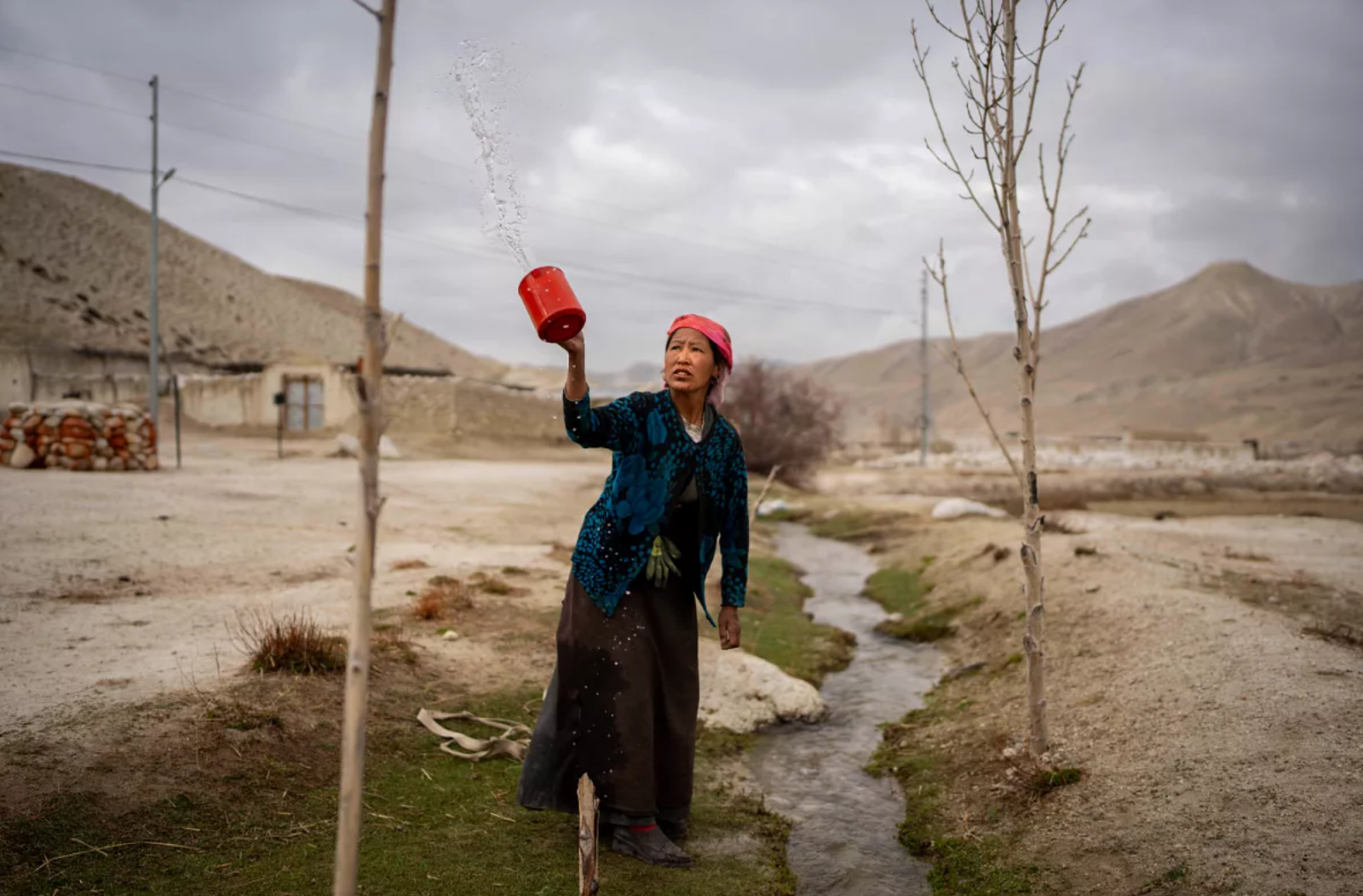
Perched at nearly 4,000 meters in Nepal's Upper Mustang region, Samjung was once sustained by melting snow and mountain springs. As snowfall grew unreliable and rains came in sudden, destructive bursts, the community's water sources dried up. Crops failed. Mud homes crumbled. And families began to leave.
Now, the village stands mostly empty — a fragile relic of a way of life transformed by climate change.
Water runs dry in the high Himalayas
The Hindu Kush-Himalaya region, stretching from Afghanistan to Myanmar, is the planet's third-largest reservoir of ice after the poles. It feeds major rivers that supply water to 240 million people in the mountains and another 1.6 billion downstream.
But this region is warming faster than lower elevations. Snowfall is becoming irregular. Glaciers are retreating. Permafrost is thawing.
"We moved because there was no water," said Kunga Gurung, 54, one of the former residents of Samjung. "Three streams — and all of them dried up."
The International Centre for Integrated Mountain Development (ICIMOD), based in Kathmandu, says these are not isolated events. A changing climate is reshaping where people can live, work, and grow food across the Himalayas.
"The weather might not always be labeled as ‘climate change' by the locals, but it is reshaping livelihoods," said Prof. Neil Adger, a human geography expert at the University of Exeter.
Samjung is not alone
Across the globe, climate extremes — from typhoons in the Philippines to wildfires in California — are displacing communities. In the Himalayas, a growing number of villages like Samjung have been forced to relocate, often due to the slow violence of drought and water scarcity.
"This chronic water shortage is one of the biggest drivers of migration in the mountains," said Amina Maharjan, a migration specialist at ICIMOD.
According to a 2023 report, up to 80% of glacier volume in the Hindu Kush and Himalayas could disappear this century if emissions aren't drastically reduced.
Upper Mustang hasn't seen snow in nearly three years. Without it, seasonal farming calendars are thrown off, livestock suffer, and crop yields fall.
"Snowfall dictates everything here — when to plant, when to harvest," said Maharjan. "Its absence is devastating."
The toll of adaptation
Samjung's decline began around the early 2000s. As rains replaced snow, the traditional mud-brick homes — built for dry, cold conditions — were battered by flash floods and melting runoff. Terraced fields eroded. Families began to leave.
Eventually, the remaining residents found new land nearly 15 kilometers away, offered by the former king of Mustang, who still holds significant local influence despite Nepal's monarchy being abolished in 2008.
Building New Samjung took years. The villagers needed time to collect materials, build homes with tin roofs, dig canals, and ensure access to roads, water, and nearby markets.
Sisters Pemba (18) and Toshi Lama Gurung (22) don't remember much of the move, but they recall how hard it was to start from scratch.
"Now we don't have to walk for hours to fetch water," said Toshi. "But we miss the old village. It's where we're from."
Some families still herd yak and sheep. Others have shifted to tourism, working near the historic town of Lo Manthang, which only opened to foreign visitors in 1992. Life is different in New Samjung — but not easier.
"It was our home," Toshi said quietly. "We want to return. But I don't think we ever can."